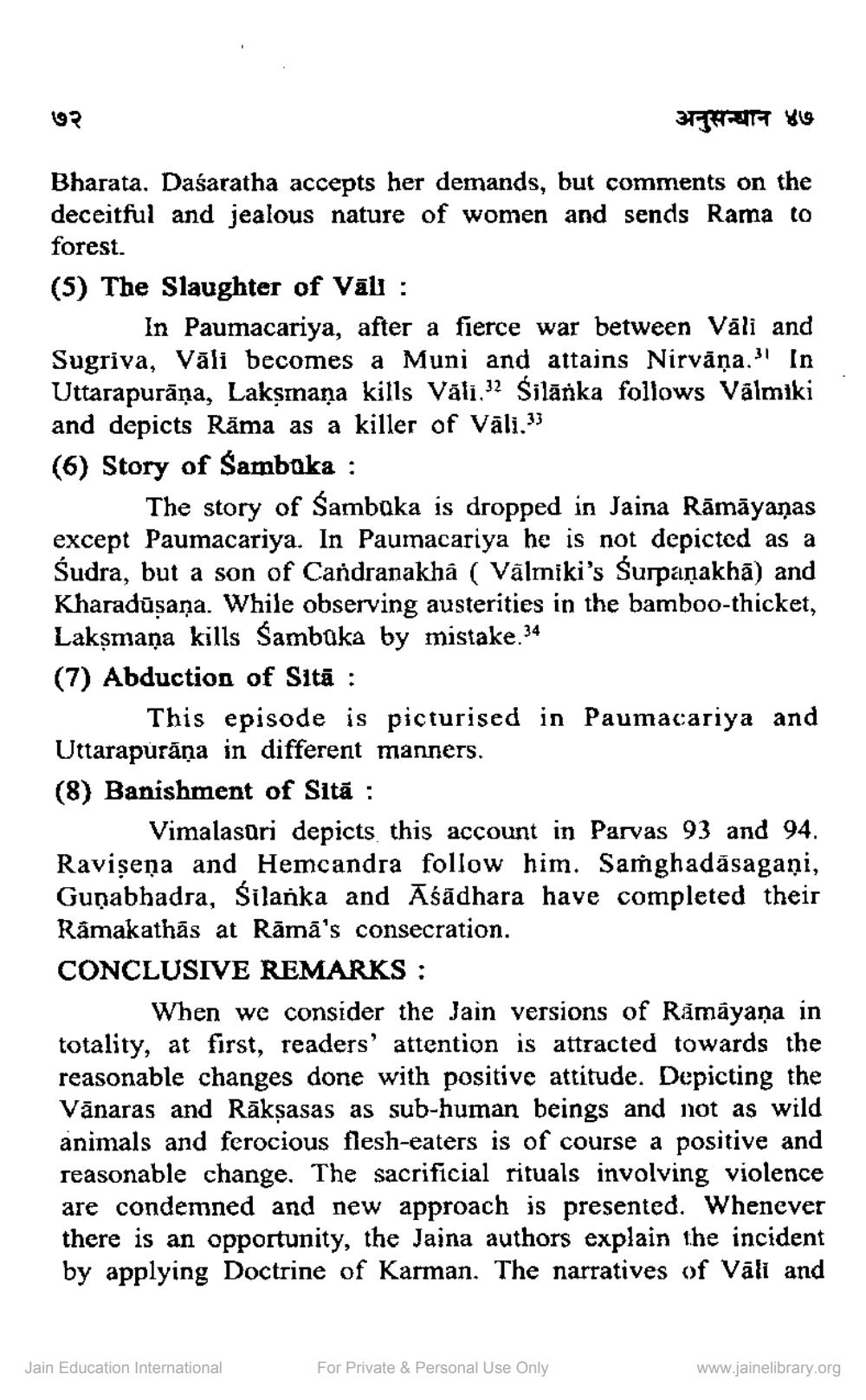________________
७२
अनुसन्धान ४७
Bharata. Dasaratha accepts her demands, but comments on the deceitful and jealous nature of women and sends Rama to forest.
(5) The Slaughter of Vāli:
In Paumacariya, after a fierce war between Väli and Sugriva, Vāli becomes a Muni and attains Nirvana." In Uttarapurāṇa, Lakṣmaṇa kills Vāli. Šilanka follows Valmiki and depicts Rama as a killer of Vali.33 (6) Story of Šambuka :
The story of Śambuka is dropped in Jaina Rāmāyaṇas except Paumacariya. In Paumacariya he is not depicted as a Śudra, but a son of Cañdranakhâ ( Vālmiki's Šuṛpaṇakhā) and Kharadūṣaṇa. While observing austerities in the bamboo-thicket, Lakṣmaṇa kills Śambuka by mistake.34
(7) Abduction of Sitā:
This episode is picturised in Paumacariya and Uttarapurāṇa in different manners.
(8) Banishment of Sita :
Vimalasuri depicts this account in Parvas 93 and 94. Raviṣeņa and Hemcandra follow him. Samghadasagani, Gunabhadra, Śilanka and Āśādhara have completed their Ramakathās at Rāmā's consecration.
CONCLUSIVE REMARKS:
When we consider the Jain versions of Rāmāyaṇa in totality, at first, readers' attention is attracted towards the reasonable changes done with positive attitude. Depicting the Vanaras and Rākṣasas as sub-human beings and not as wild animals and ferocious flesh-eaters is of course a positive and reasonable change. The sacrificial rituals involving violence are condemned and new approach is presented. Whenever there is an opportunity, the Jaina authors explain the incident by applying Doctrine of Karman. The narratives of Vali and
Jain Education International
For Private & Personal Use Only
www.jainelibrary.org




